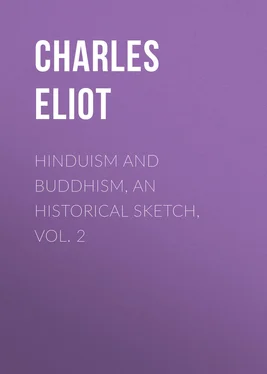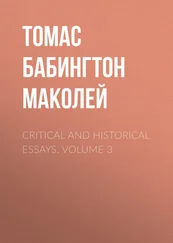Charles Eliot - Hinduism and Buddhism, An Historical Sketch, Vol. 2
Здесь есть возможность читать онлайн «Charles Eliot - Hinduism and Buddhism, An Historical Sketch, Vol. 2» — ознакомительный отрывок электронной книги совершенно бесплатно, а после прочтения отрывка купить полную версию. В некоторых случаях можно слушать аудио, скачать через торрент в формате fb2 и присутствует краткое содержание. Жанр: foreign_religion, Философия, Религиозная литература, foreign_psychology, foreign_antique, foreign_prose, на английском языке. Описание произведения, (предисловие) а так же отзывы посетителей доступны на портале библиотеки ЛибКат.
- Название:Hinduism and Buddhism, An Historical Sketch, Vol. 2
- Автор:
- Жанр:
- Год:неизвестен
- ISBN:нет данных
- Рейтинг книги:4 / 5. Голосов: 1
-
Избранное:Добавить в избранное
- Отзывы:
-
Ваша оценка:
- 80
- 1
- 2
- 3
- 4
- 5
Hinduism and Buddhism, An Historical Sketch, Vol. 2: краткое содержание, описание и аннотация
Предлагаем к чтению аннотацию, описание, краткое содержание или предисловие (зависит от того, что написал сам автор книги «Hinduism and Buddhism, An Historical Sketch, Vol. 2»). Если вы не нашли необходимую информацию о книге — напишите в комментариях, мы постараемся отыскать её.
Hinduism and Buddhism, An Historical Sketch, Vol. 2 — читать онлайн ознакомительный отрывок
Ниже представлен текст книги, разбитый по страницам. Система сохранения места последней прочитанной страницы, позволяет с удобством читать онлайн бесплатно книгу «Hinduism and Buddhism, An Historical Sketch, Vol. 2», без необходимости каждый раз заново искать на чём Вы остановились. Поставьте закладку, и сможете в любой момент перейти на страницу, на которой закончили чтение.
Интервал:
Закладка:
3. The Lalita-vistara 133 133 Edited by Rajendralala Mitra in the Bibliotheca Indica and partially translated in the same series. A later critical edition by Lefmann, 1902-8.
is a life of Śâkyamuni up to the commencement of his mission. Though the setting of the story is miraculous and Buddhas and Bodhisattvas innumerable are freely spoken of, yet the work does not enunciate the characteristic Mahayanist doctrines so definitely as the other treatises here enumerated. It is said to have originally belonged to the school of the Sarvâstivâdins and to have been subsequently accepted by the Mahayanists, and though it is not an epic but a collection of ballads and legends, yet it often reads as if it were a preliminary study for Aśvaghosha's Buddhacarita. It contains Sanskrit versions of old legends, which are almost verbal renderings of the Pali text, but also new material and seems to be conscious of relating novelties which may arouse scepticism for it interrupts the narrative to anathematize those who do not believe in the miracles of the Nativity and to extol the merits of faith ( śraddhâ not bhakti ). It is probably coeval with the earlier Gandharan art but there are no facts to fix its date. 134 134 The early Chinese translations seem doubtful. One said to have been made under the later Han has been lost. See Nanjio, No. 159.
4. The Lankâvatâra 135 135 See Burnouf, Introduction , pp. 458 ff. and J.R.A.S. 1905, pp. 831 ff. Rajendralala Mitra, Nepalese Buddhist Literature , p. 113. A brief analysis is given in J.A.S.B. June, 1905 according to which the sûtra professes to be the work of a human author, Jina of the clan of Kâtyâyana born at Campâ. An edition of the Sanskrit text published by the Buddhist Text Society is cited but I have not seen it. Chinese translations were made in 443 and 515 but the first is incomplete and does not correspond with our Sanskrit text.
gives an account of the revelation of the good Law by Śâkyamuni when visiting Lanka. It is presumably subsequent to the period when Ceylon had become a centre of Buddhism, but the story is pure fancy and unconnected with history or with older legends. It relates how the Buddha alighted on Mt. Malaya in Lanka. Ravana came to pay his respects and asked for definitions of virtue and vice which were given. The Bodhisattva Mahâmati (apparently Mañjuśrî) proceeded to propound a series of more abstruse questions which are answered at considerable length. The Lankâvatâra represents a mature phase of speculation and not only criticizes the Sânkhya, Pâsupata and other Hindu schools, but is conscious of the growing resemblance of Mahayanism to Brahmanic philosophy and tries to explain it. It contains a prophecy about Nâgârjuna and another which mentions the Guptas, and it appears to allude to the domination of the Huns. This allusion would make its date as late as the sixth century but a translation into Chinese which is said to correspond with the Sanskrit text was made in 513. If so the barbarians referred to cannot be the Huns. An earlier translation made in 443 does not agree with our Sanskrit text and perhaps the work existed in several recensions.
5. The Suvarṇa-prabhâsa or Glitter of Gold 136 136 Abstract by Rajendralala Mitra, Nepalese Buddhist Lit. p. 241.
is a Vaipulya sûtra in many ways resembling the Lotus. It insists on the supernatural character of the Buddha. He was never really born nor entered into Nirvana but is the Dharma-kâya. The scene is laid at Râjagṛiha and many Brahmanic deities are among the interlocutors. It was translated into Chinese about 420 A.D. and fragments of a translation into Uigur have been discovered in Turkestan. 137 137 See Nanjio, No. 127 and F.W.K. Muller in Abhandl. der K. Preuss. Akad. der Wissenschaften , 1908. The Uigur text is published in Bibliotheca Buddhica , 1914. Fragments of the Sanskrit text have also been found in Turkestan.
The contents comprise philosophy, legends and spells.
6. Gaṇḍa-vyûha 138 138 Abstract by Raj. Mitra, Nepalese Buddhist Lit. pp. 90 ff. The Śikshâsamuccaya cites the Gaṇḍa-vyûha several times and does not mention the Avataṃsaka.
or the Structure of the World, which is compared to a bubble. The name is not found in the catalogue of the Chinese Tripitaka but the work is said to be the same as the Avataṃsaka sûtra which is popular in the Far East under the name of Hua-yên in China or Ke-gon in Japan. The identity of the two books could not have been guessed from the extracts and analyses which have been published but is guaranteed by high authorities. 139 139 The statement was first made on the authority of Takakusu quoted by Winternitz in Ges. Ind. Lit . II. i. p. 242. Watanabe in J.R.A.S. 1911, 663 makes an equally definite statement as to the identity of the two works. The identity is confirmed by Pelliot in J.A. 1914, II. pp. 118-121.
It is possible however that the Gaṇḍa-vyûha is only a portion of the larger work called Avataṃsaka. So far as can be judged from the extracts, this text preaches in a fully developed form, the doctrines of Śûnyatâ, Dharma-kâya, the omnipresence of the Buddha and the redemption of the world by the exertions of Bodhisattvas. Yet it seems to be early, for a portion of it was translated into Chinese about 170 A.D. (Nanjio, 102) and about 405 Kumârajîva translated a commentary on it ascribed to Nâgârjuna (Nanjio, 1180).
7. Tathâgata-guhyaka. This work is known by the analysis of Rajendralala Mitra from which it appears to be a Tantra of the worst class and probably late. Its proper title is said to be Śrîguhyasamaja. Watanabe states that the work catalogued by Nanjio under No. 1027 and translated into Chinese about 1000 A.D. is an expurgated version of it. The Śikshâsamuccaya cites the Tathâgata-guhya-sûtra several times. The relations of these works to one another are not quite clear.
8. Samâdhirâja 140 140 Abstract by Raj. Mitra, Nepalese Buddhist Lit. pp. 81 ff. Quoted in Śântideva's Bodhicaryâvatâra, VIII. 106.
is a Vyâkaraṇa or narrative describing different forms of meditation of which the Samâdhirâja is the greatest and best. The scene is laid on the Vulture's Peak and the principal interlocutors are Śâkyamuni and Candraprabha, a rich man of Râjagṛiha. It appears to be the same as the Candrapradîpa-sûtra and is a complete and copious treatise, which not only expounds the topic from which it takes its name but incidentally enumerates the chief principles of Mahayanism. Watanabe 141 141 See J.R.A.S. 1911, 663.
states that it is the Yüeh-têng-san-mei-ching (Nanjio, 191) translated about 450 and again in 557 A.D.
9. Daśabhûmîśvara. 142 142 Abstract by Raj. Mitra, Nepalese Buddhist Lit. pp. 81 ff.
An account of the ten stages in the career of a Bodhisattva before he can attain to Buddhahood. The scene is laid in the paradise of Indra where Śâkyamuni was temporarily sojourning and the principal interlocutor is a Bodhisattva named Vajragarbha. It is said to be the same as the Daśabhûmika-sûtra first translated into Chinese about 300 A.D. (Nanjio, 105 and 110) but this work appears to be merely a portion of the Gaṇḍa-vyûha or Avataṃsaka mentioned above.
These nine works are all extant in Sanskrit and are known in Nepal as the nine Dharmas, the word Dharma being an abbreviation for Dharmaparyâya , revolution or exposition of the law, a term frequently used in the works themselves to describe a comprehensive discourse delivered by the Buddha. They are all quoted in the Śikshâsamuccaya, supposed to have been written about 650 A.D. No similar collection of nine seems to be known in Tibet or the Far East and the origin of the selection is obscure. As however the list does not include the Svayambhû Purâṇa, the principal indigenous scripture of Nepal, it may go back to an Indian source and represent an old tradition.
Читать дальшеИнтервал:
Закладка:
Похожие книги на «Hinduism and Buddhism, An Historical Sketch, Vol. 2»
Представляем Вашему вниманию похожие книги на «Hinduism and Buddhism, An Historical Sketch, Vol. 2» списком для выбора. Мы отобрали схожую по названию и смыслу литературу в надежде предоставить читателям больше вариантов отыскать новые, интересные, ещё непрочитанные произведения.
Обсуждение, отзывы о книге «Hinduism and Buddhism, An Historical Sketch, Vol. 2» и просто собственные мнения читателей. Оставьте ваши комментарии, напишите, что Вы думаете о произведении, его смысле или главных героях. Укажите что конкретно понравилось, а что нет, и почему Вы так считаете.












